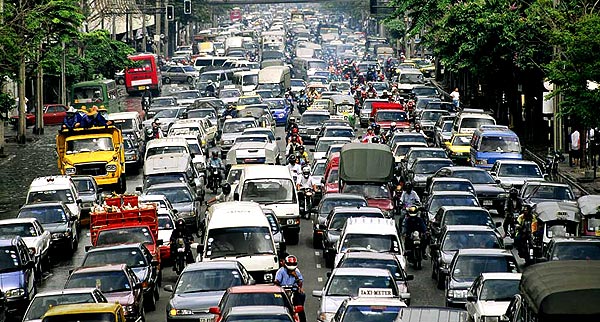This number includes passenger and commercial cars and heavy vehicles but excludes working heavy vehicles that operate off-road, such as the large quarry dumper trucks. This figure represents a 3.6% increase in cars in 2010, approximately 985 million.
Much of the blame for this growth, the second largest annual growth in history, is because of the explosion of the Chinese market, which has sold 27.5% more cars than in 2010. There are 16.8 million more vehicles in China than in 2010, with a total number that reaches 78 million.

For the first time, China has overtaken Japan in the number of cars (73.9 million) and stands in the second position in the world rankings. Said this, the vehicles/population ratio is still very low in China, and the global car champion with the major number of cars on its streets remains the United States. Currently, the USA has registered a tremendous quantity of 239.8 million cars, more than driver licenses issued in the country.
Spain, for example, does not reach 30 million cars, so it does not reach the U.S. ratio of one car for every 1.3 persons. If the future continues like that, the U.S. will not increase registrations by more than 1% per year, while China could double its fleet of vehicles in less than 10 years.
This means that in 15 years, China could have surpassed the U.S., and all that, forgetting countries like India and Brazil, which are increasingly contributing to the growth of cars in the world.
It's time to think about the future. Can the oil and energy industry endure the demand? Are we thinking about what will happen to our planet?










 2007 BMW 525 By Owner
2007 BMW 525 By Owner  2007 Chevrolet Avalanche By Owner
2007 Chevrolet Avalanche By Owner  2011 Hyundai Sonata By Owner
2011 Hyundai Sonata By Owner  2005 Nissan Titan By Owner
2005 Nissan Titan By Owner  2006 Pontiac G6
2006 Pontiac G6  2005 Chevrolet Malibu
2005 Chevrolet Malibu  2009 Saturn Aura
2009 Saturn Aura  2003 Toyota Corolla
2003 Toyota Corolla  2008 Acura TL
2008 Acura TL  2009 Hyundai Genesis By Owner
2009 Hyundai Genesis By Owner  2005 Cadillac CTS
2005 Cadillac CTS  2010 Ford Explorer
2010 Ford Explorer  2014 Ford Fiesta
2014 Ford Fiesta  1983 Mercedes Benz 380
1983 Mercedes Benz 380  2006 Jeep Grand Cherokee
2006 Jeep Grand Cherokee  2003 Volkswagen Passat
2003 Volkswagen Passat  2018 Ford Focus
2018 Ford Focus  2014 Hyundai Santa Fe
2014 Hyundai Santa Fe  2011 Ford Fiesta
2011 Ford Fiesta  2014 Volkswagen Passat
2014 Volkswagen Passat  2013 Dodge Dart
2013 Dodge Dart  2017 Chevrolet Traverse
2017 Chevrolet Traverse  2016 Ford Escape
2016 Ford Escape  2013 Hyundai Sonata
2013 Hyundai Sonata  2015 Chevrolet Equinox
2015 Chevrolet Equinox